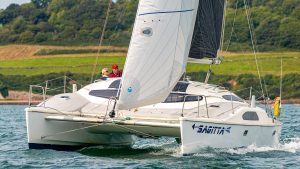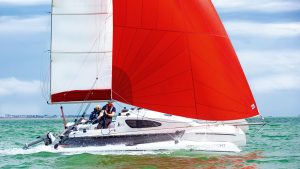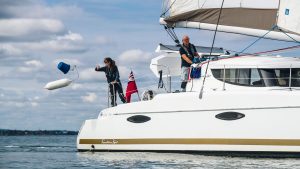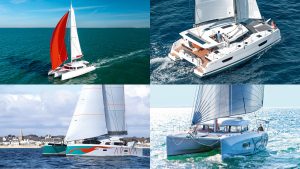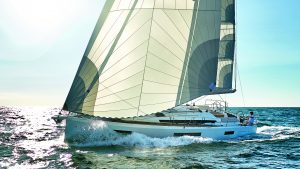For some monohull sailors, multihulls are still from a different planet, or perhaps even a different galaxy. Despite the increasing popularity and acceptance of catamarans as charter boats, many of…
Multihull and catamaran sailing: sailing with two or more hulls
First look: Outremer 52 – serious adventure catamaran
Multihulls are clearly booming. They’ve been popular as charter boats for a long time, thanks to the sheer amount of real estate they offer, and the appeal of life on…
First look: Nautitech 44 Open
Founded in 1994, Nautitech Catamarans have been part of the Bavaria Yachts Group since 2014, though they are still built in Rochefort in France. Previous models have offered options to…
Neel 43 review: re-birth of the cruising trimaran
For anyone who doesn’t follow the world of multihulls, it might be easy to imagine that catamarans are for cruising and trimarans are for racing. After all, two hulls offer…
Astus 22.5 review: sporty little trimaran for the weekend?
Small multihulls like the Astus 22.5 can be remarkable boats in which you can do remarkable things. Like Richard and Lilian Woods: each sailing one of their own Woods-designed Strider…
Catamaran sailing skills: recover a multihull man overboard
Finding yourself in a man overboard (MOB) situation probably ranks near the top of every sailor’s list of biggest fears whether it’s a monohull MOB of a multihull man overboard.…
Catamaran sailing skills: Mooring and anchoring a multihull
How do you make an average passage speed of 7 knots, fit in three double cabins and a huge saloon in under 36ft of boat length? Add another hull of…
Best multihulls: We pick the best two and three hulled yachts
Few of us can have failed to see the rapid growth of interest in multihulls and this formerly niche sector is now a mainstream part of the new boat market.…
James Wharram: Eight bells for the multihull pioneer
Tributes have been paid to pioneering multihull designer and sailor James Wharram, who has died aged 93
Busting the hull speed myth
Waterline length is not the defining factor in maximum boat speed that we all think it is. Julian Wolfram busts the hull speed myth





